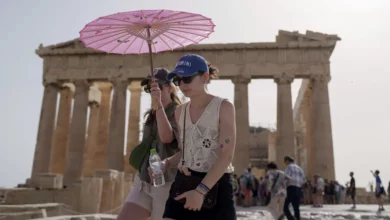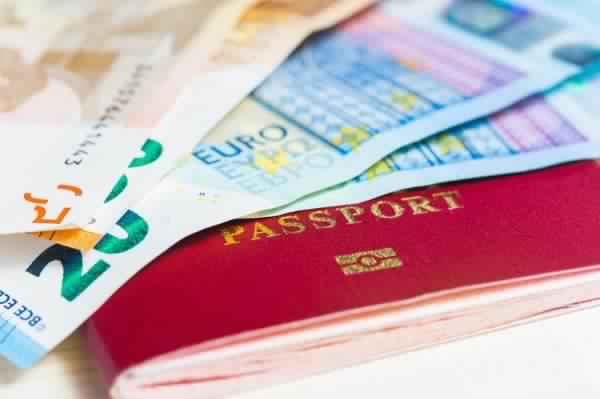Gypsies, graffiti, tapas and travel in southern Spain
Driving past the rows of olive trees in the luscious green valleys of Andalusia, the long bus ride ends at Estación de Granáda, the capital of the province of Granada in the southern autonomous region of Andalusia. The relaxed laid-back attitude for which Andalusians are famous for is contagious, especially for travelers who have just caught wind of the Sierra Nevada Mountains in the distance. It provides the serene backdrop to a city rich in culture, history, music and politics.
Granada is most famous for Alhambra, a site that represented the peak of Arab civilization in Andalusia during the 700-year reign and exemplifies the collective benefits of multiculturalism and pluralism that many societies today strive to achieve. Most visitors come with a dogmatic approach to sightseeing, relentlessly clicking their cameras while the tour guide rushes them to the next spot and inevitably into the madness of souvenir shops. With this 21st century machine-like efficiency to tourism, one may often miss the idiosyncrasies of this dynamic city. Beyond the walls of Alhambra lies a vibrant city, pulsating to the rhythms of a fusion of cultures.
The locals have managed to preserve traditional forms of art, in all its types, just as their ancestors before them. From culinary delights and gypsy influences, to the nightlife and festivals, Granada’s allure keeps visitors asking how time could fly by so quickly in a place so seemingly timeless.
Let’s get it started in Graná, as the locals call it.
A trip to Graná is incomplete without a visit to the site that was a runner-up for the “New Seven Wonders of the World” – Alhambra, one of Spain’s most popular destinations. Locals suggest buying entrance tickets to Alhambra days in advance since entrance to the Nasrid Palaces is strictly limited to the half hour indicated on your ticket, due to maximum capacity restrictions (350 people each half hour). Tickets can be bought over the phone (+34 91 537 91 78) or at La Caixa Bank branches. For those who would rather not test their fledgling Spanish skills, the tech savvy tourist can purchase tickets online at www.alhambra-tickets.es The price of tickets is €13 and children under 12 enter for free.
Alhambra, a UNESCO World Heritage site, was once a palace and citadel, served as a fortress called Alcazaba, and was home to the Nasrid Sultans and other prominent officials until the 14th century. It was dubbed “The Red Fortress” because of its red clay surroundings that were used to build the site. Visitors are greeted by vast gardens at the entrance, designed by Muslim rulers of the time that were meant to resemble paradise as explained in the Quran. However, once a year in July, the tranquil gardens serve as a venue for the International Music and Dance festival, known to host some of the best symphonies and graceful ballet companies.
Time to Grub
While the pathways in Alhambra may lead to gardens and fountains, the pathways outside the site lead to neighborhood bars that serve tapas with drinks. However, tourist traps are ubiquitous, so be careful where you go. While the number of options may make you indecisive, the fierce competition has led to a “tapas war” where each restaurant tries to outdo the other.
The main city square, Plaza de Bib-Rambla offers a friendly atmosphere for tourists, but locals will often point you in the direction of the popular barrio (neighborhood) of La Chana.
Hidden in the alleyways of La Chana is El Arenal, a bar where you can gorge yourself with tapas and quench your thirst with the local “vino tinto”, a delicious ice-cold red wine. The selection of tapas varies widely in quantity and quality, however some of the top picks include Sardines, Chorizo al vino (Spanish sausage with wine), Morcilla (black pudding), Pan Catalan (bread with freshly squeezed tomatoes and cured ham), and Gambas al ajaillo (shrimp with garlic).
If you opt for the caña, local beer, then you will likely be offered a different set of tapas. Just make sure you order between 12pm and 4 pm, or 8pm and midnight. Unlike the rest of the country, Andulacians will not be disturbed during siesta time, a tradition they have proudly preserved even in the face of economic pressure to conform to the work schedules of Spain and the EU.
If you catch the tapas bar before or after siesta time, the average price of €1.50 per beverage will leave you singing songs by Ojos de Brujo with street musicians from Basque country. Although the tapas can be a meal in itself, a myriad of restaurants serve fresh seafood, transported daily from the coast only 90 minutes away. Restaurants also proudly serve traditional Moroccan cuisine. For dessert, the best ice cream can be found at Los Italianos. The effect of the vino tinto and the contagious ambiance of the city leaves an aftertaste of belonging.
A walk to remember
While the nights are filled with drinking and eating in Graná, the mornings are best for hiking around the steep cobblestone alleyways of Al Bayzin quarter, once famous for its Arab artist inhabitants dating back to the 13th century. Many homes and buildings in the neighborhood of Al Bayzin, also a UNESCO site, provide a glimpse into the city’s ancient architecture, which stubbornly defies the incessant onslaught of time.
As we meandered through the long and winding alleyways of this college town and around Plaza Nueva, numerous five-meter wide murals of flamenco dancers and street graffiti of different assortments indicated the locals’ undying passion for art.
Stencil art, a new form of graffiti springing up in major capitals worldwide, gives a glimpse into the minds of the counterculture and the contentious issues of younger Granadans. Much of the stencil art carries a message, ranging from support for the Palestinian cause, anti-gentrification against the ongoing changes in the Sacromonte neighborhood, to support for General Francisco Franco, the Spanish dictator who ruled for nearly 40 years. The images are often satirical and controversial. For example, one illustration depicts two uniformed officers causing excessive physical harm to a civilian with a caption that facetiously reads in Spanish, “La policia esten aqui para ayudarmos,” meaning the police are here to help us. Despite being illegal, the city is blotted with these spray-painted images, leaving behind an urban canvas.
Even though the best way to see Granáda is by foot, public transportation is an efficient alternative with bus rides costing a mere €1.10, regardless of the destination. A bus ride to an afternoon teahouse, called a teteria, in Alcaiceria will transport you to the ancient silk market that burned down in the 19th century and is now a souk for souvenirs from North Africa and India.
Following an afternoon of tea and siesta, the nights kick off with live music throughout the city’s bars and cafes. Although each of Spain’s five provinces boasts a unique sound, none is as culturally intertwined as Andalusia’s. In fact, a freed Iraqi slave named Ziryab transformed his oud into an instrument never seen before, and now known as a guitar, which he brought to Andalusia. From this point forth, the town became a thriving cultural center with innovative sounds and rhythms.
Granada is also renowned for its gypsy population, which has been performing Flamenco and Zambra music shows for centuries. Tour groups arranged by Spanish Gypsy flamenco artists take you to the caves up in the hills of the Sacromonte district for an up-close and personal experience in 50 square-meter caves. As part of the tour, the group makes a stop in an old Jewish neighborhood, located on the elevated hills around the city center where a view of Alhambra from a distance once again leaves you breathless. Beware of paying too much for a tour in the land of gypsies, which should cost approximately €20 per traveler.
Regardless of whether you choose to spend time looking at Graná’s massive cathedrals, dining at local tapas bars, scouring museums or simply checking out modern-day graffiti and live shows, it seems like there will never be enough time to wholly experience the city. The endless list of activities inevitably pulls you back to Graná, where you again pick up where you left off. And every time, the trip is truly unforgettable.




